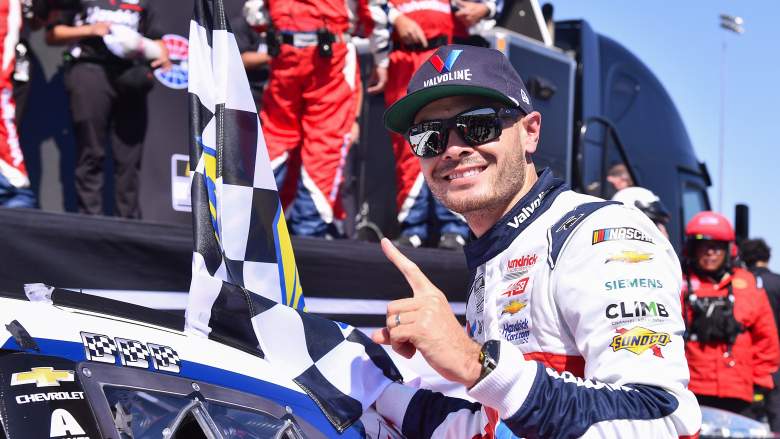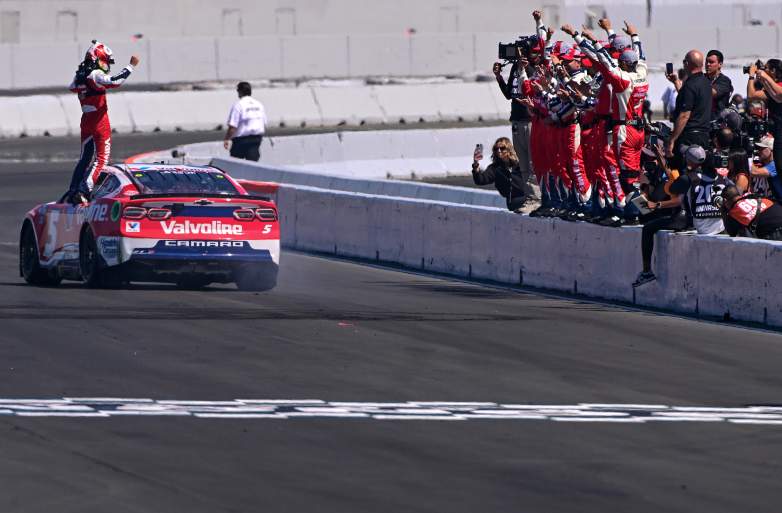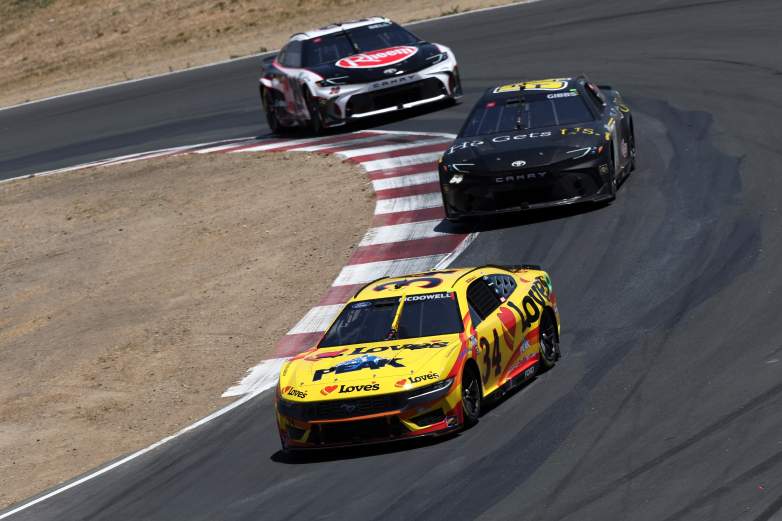
Kyle Larson drove to a homecoming victory at the NASCAR Cup Series Toyota/Save Mart 350 at Sonoma Raceway to secure his third win of this season. Larson grew up in Elk Grove, California.
Larson and his team Hendrick Motorsports utilized the abundance of cautions and pit stop strategy to run down the race leaders, Chris Buescher and Martin Truex Jr., and secure the lead in the final nine laps. Larson’s pit stop strategy was to pit in the second stage, which allowed him a shorter pit stop in the final stage to briefly refuel and come out on fresher tires with 13 laps left.
Although his pit stop strategy was the key to the race win, with nine cautions and a race track that necessitated a fluid strategy, Larson expressed that even with the win, he wasn’t clear on the strategy in the moment, including having to run down the race leaders.
“I didn’t know what we were doing as far as strategy. I was just out there banging laps away. I don’t know, we study all the strategy, but it’s like doing homework. I don’t really know what I’m looking at. Yeah, I was like, well, man, these guys are going to have to pit another time maybe. Then we said we had to go race and pass these guys. I got a bit nervous. I knew I’d be quick from the get go, but I thought once the tires would come up to temp it would even off too much. Thankful that we had enough grip. Thankful, too, that those guys got racing and Martin never got clear really to where I could get stuck in third and that really saved the race. I thought, too, once he got the lead, I’m like, man, I hope he doesn’t have somebody to judge off of here into 4 and he misses the apex, and sure enough, he did, and I had a big run,” Kyle Larson said, in his post-race interview with NBC Sports.

GettyKyle Larson celebrates victory at Sonoma Raceway
Larson’s Winning Pit Strategy at Toyota/Save Mart 350
Larson’s pit strategy came down to his crew chief, Cliff Daniels, who chose to run Larson for as long as possible in the final stage before stopping for fresher tires and a quick refuel. Since Larson had pit for longer and for more fuel in the second stage, his pit stop in the final stage was much shorter, and the longer run time before pitting meant that his tires would have far more grip than those in the lead who were under pressure to manage their tires until the race end.
The additional fuel and younger tires allowed Larson to be more aggressive when he cycled into eighth coming out of the pits, easily allowing him to overtake the field for the lead.
In contrast, Truex and Buescher’s pit strategy also saw them pitting at the end of the second stage to preserve track position, but not only did pit time matter, but fuel management did too.
Alongside the pit strategy was the sheer amount of cautions earlier in the race which led to a lengthy green flag run in the final stage which allowed Larson the time to cut through the field. Larson passed Buescher on the tail of Truex and then overtook Truex when he went wide in Turn 4.
Larson’s quick pit for additional fuel came in clutch when Truex and Buescher both had to race under fuel conservation mode in the final few laps, which allowed Larson to pull away and widen the gap between them. Truex ran out of fuel on the final lap, and ended in 27th, while Buescher finished in third. Michael McDowell took second place.
“Thought we were going to have a shot to win there and just couldn’t quite get by (Chris Buescher) quick enough. I finally cleared him; I made a mistake and (Kyle Larson) was right there to pounce and then obviously ran out of gas so it didn’t matter. I’m not sure why we didn’t try to save a little at the end. I was clearly not going to catch the 5 or pass him. It’s a shame that we went around the last corner and went from second to wherever we finished. It sucks, but it was a tough day, and we had a good car. We battled and did a good job. We were going to have a good day, but just one corner short.” Martin Truex Jr. said in his post-race interview with NBC Sports.

GettyTy Gibbs at Toyota/Save Mart 350
Nine Cautions at Sonoma Raceway
Toyota/Save Mart 350 featured nine cautions, which tied the track record for most cautions in one race. The ample amount of cautions were due in part to the newly-paved track lacking the layer of rubber that’s laid down onto the tracks throughout a race (or, for permanent tracks, many races) which offers tires additional grip. That, and the new set of concrete barriers along Turn 11 seemed to be the culprits for the multi-car pileups.
Ty Gibbs was one such driver who made contact with the inside wall on Turn 11 after he made a driver error.
“Yeah, I hit the (Turn 11) inside wall with our He Gets Us Camry. I was finding grip down there and was making up time, and then got too close and clipped the wall and hurt the right front,” Gibbs told NBC Sports.
Joey Logano began the race in pole position, but his race was ended early by Chase Briscoe, who suffered a transmission failure and spun out, taking Logano with him. Erik Jones and Josh Berry came into contact, which sent Berry sliding into the entry at Turn 11 and straight into the midfield, upsetting the pack of cars like a bowling ball. In total, seven drivers did not finish the race.
The cautions interrupted the flow of the race and meant that pit-stop strategy was essential in the final stage which ran under a green flag, finally allowing the remaining cars on track to evaluate track position, fuel mileage, and attempt a push toward the podium and/or top-ten.
For Larson, whose playoff waiver came just five days ago, his win at Sonoma Raceway couldn’t have come at a better time. He’s since retaken the series points lead and is the favorite to win the championship title when the NASCAR playoffs begin in 11 weeks.
It’s Larson’s 26th win of his NASCAR Cup Series career, and he is now tied with Fred Lorenzen and Dale Earnhardt Jr. for 32nd on NASCAR’s all-time wins list.
Comments
Kyle Larson’s Homecoming Win Due to Pit Strategy, Race Cautions